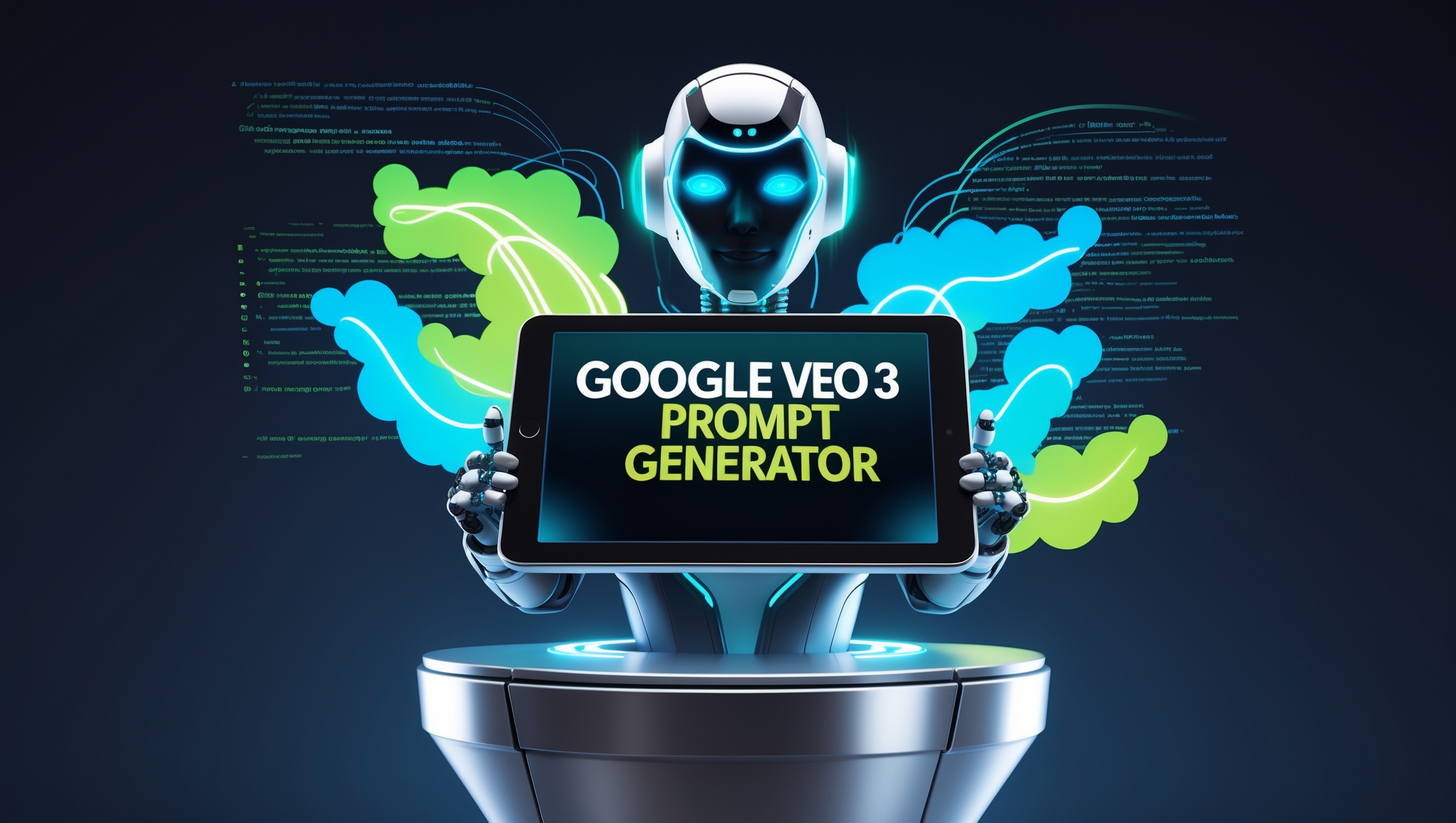“Garbage in, garbage out.”
You’ve probably heard this phrase in the world of computing. It’s a simple truth: the quality of your output is directly tied to the quality of your input. In today’s burgeoning landscape of Artificial Intelligence, this principle has found a new, more conversational name: the effective prompt.
For anyone interacting with AI—be it a writer seeking inspiration, a marketer analyzing data, a developer coding a new application, or simply a curious mind exploring the frontiers of technology—understanding how to communicate your desires to an AI is no longer just a technical skill. It’s an art form.
This is your comprehensive guide to mastering that art. We’re not just going to scratch the surface. We’ll take a deep dive, transforming you from a hesitant question-asker into a confident collaborator with your AI tools. By the end of this 1500-word journey, you’ll be equipped to write an effective prompt that gets you the precise, high-quality results you’re looking for, every single time.
Deconstructing the Prompt: What Are We Really Talking About?
At its core, a prompt is simply a set of instructions you give to an AI. Think of yourself as a director and the AI as your incredibly talented, but very literal, actor. The prompt is your script, your direction, and your creative brief all rolled into one. It’s the bridge between your human intention and the AI’s vast computational power.
But a truly effective prompt is much more than a simple question. It’s a carefully constructed piece of communication that guides the AI, providing it with the necessary context, constraints, and clarity to produce a stellar performance.
From Vague Whispers to Crystal-Clear Directives
Let’s consider the difference. A novice user might ask an AI:
“Write something about cars.”
The AI, faced with such a boundless request, will likely generate a generic, uninspired paragraph about the history of automobiles or a list of popular car models. It’s not the AI’s fault; it did what was asked.
Now, imagine a more seasoned user, someone who understands the power of an effective prompt:
“Act as a seasoned automotive journalist writing for a luxury lifestyle magazine. Craft a 500-word article that captures the exhilarating experience of driving a vintage 1965 Porsche 911 on the winding coastal roads of Big Sur. The tone should be evocative, sophisticated, and slightly nostalgic, focusing on the sensory details: the roar of the air-cooled engine, the feel of the wooden steering wheel, and the breathtaking ocean views. The target audience is affluent car enthusiasts in their 40s and 50s.”
See the difference? The second prompt is a world away from the first. It’s specific, it’s contextual, and it’s rich with detail. It gives the AI a role to play, a story to tell, and a specific audience to engage. The result will inevitably be a far more compelling and useful piece of content. This is the fundamental power of writing an effective prompt.
The Anatomy of an Effective Prompt: Your Blueprint for Success

Crafting an effective prompt isn’t about guesswork; it’s about a systematic approach. By incorporating several key elements, you can dramatically increase the quality of your AI-generated content.
The Core Four: Building a Solid Foundation
Think of these four elements as the pillars of any effective prompt.
Task: The “What” This is the most fundamental part of your prompt: what do you want the AI to do? Be explicit. Do you want it to write, summarize, translate, code, analyze, or something else entirely? Use strong, clear action verbs.
- Instead of: “Can you tell me about this document?”
- Try: “Summarize the key findings of the attached research paper into five bullet points.”
Context: The “Why” and “Who” Context is what separates a generic response from a tailored one. Why do you need this information? Who is the intended audience? Providing this background helps the AI understand the purpose of your request and adjust its tone, style, and complexity accordingly.
- Example: “I’m a high school teacher preparing a lesson plan on photosynthesis. Explain the process in simple, engaging terms that a 15-year-old can easily understand.”
Exemplars: The “How” Sometimes, showing is better than telling. If you have a specific format or style in mind, provide an example. This is one of the most powerful ways to create an effective prompt, as it gives the AI a concrete model to follow.
- Example: “I need to write a product description for a new brand of organic coffee. Here’s an example of a style I like: ‘[Insert a well-written product description here]’. Write a new description for ‘Sunrise Blend,’ focusing on its notes of chocolate and citrus, and its fair-trade origins.”
Persona: The “As Who” Assigning a persona to the AI can be a game-changer. This tells the AI to adopt a specific voice, perspective, and level of expertise. This simple trick can instantly elevate the quality and relevance of the output.
- Example: “You are a world-renowned cybersecurity expert. Write a blog post explaining the dangers of public Wi-Fi and provide five actionable tips for staying safe.”
Refining the Details: The Devil is in the Specifics
Once you have the core four down, you can further enhance your prompt with these refining elements.
- Format: Do you want a paragraph, a bulleted list, a table, a JSON object, or a Python script? Specifying the format saves you time and ensures the output is immediately usable.
- Tone: How should the content feel? Formal, casual, humorous, empathetic, professional, or academic? The tone will dramatically shape the reader’s experience.
- Length: Be specific about the desired word count or the number of points you want. “A short paragraph” is subjective; “a paragraph of approximately 100 words” is a clear instruction.
From Good to Great: Advanced Techniques for the Prompt Savvy
Ready to move beyond the basics? These advanced techniques will help you tackle more complex tasks and unlock even greater potential from your AI partner.
H3: Chain-of-Thought Prompting: Guiding the AI’s Reasoning
For complex problems that require logical steps, you can guide the AI’s “thinking” process. By asking it to “think step-by-step,” you encourage a more reasoned and accurate response.
- Example: “A customer bought three items costing $15.99, $24.50, and $7.85. They have a 15% discount coupon. The sales tax is 7%. Please calculate the final price, explaining each step of the calculation.”
This approach not only gives you the final answer but also shows you the logic behind it, making it easier to verify the accuracy of the output. This is a hallmark of a truly effective prompt when dealing with analytical tasks.
The Art of Iteration: Your Conversation with the AI
Don’t expect to write the perfect prompt on your first try, especially for complex requests. The real magic happens in the follow-up. Think of it as a conversation.
- Start Broad, Then Narrow: You might begin with a more general prompt to see what the AI produces, then refine your request based on its initial response.
- Provide Feedback: If the AI’s output isn’t quite right, tell it what to change. “That’s a good start, but can you make the tone more formal?” or “Could you expand on the second point and provide a real-world example?”
- Combine and Conquer: For very large or multifaceted tasks, break them down into smaller, more manageable prompts. Ask the AI to generate an outline first. Then, have it write each section individually. Finally, ask it to combine everything into a cohesive whole.
This iterative process is crucial for crafting a highly specific and effective prompt that meets your exact needs.
The Human Element: Why Your Voice Still Matters Most
In this new era of AI collaboration, it’s easy to become overly reliant on the technology. But remember, the AI is a tool, and you are the artisan. Your creativity, your critical thinking, and your unique perspective are what give the final product its soul.
Never treat the AI’s output as the final word. Review it, edit it, and infuse it with your own voice and expertise. The goal isn’t to have the AI do your work for you; it’s to use the AI to augment your abilities, to brainstorm faster, to overcome writer’s block, and to explore ideas more efficiently.
The most effective prompt is not just about a clever combination of keywords and instructions. It’s about a clear vision and the ability to communicate that vision effectively. As you practice and experiment with these techniques, you’ll find that you’re not just getting better at talking to an AI—you’re getting better at clarifying your own thoughts and intentions. And that is a skill that will serve you well, no matter what the future of technology holds. So go ahead, start the conversation. Your next great creation is just an effective prompt away.
Frequently Asked Questions about Effective Prompts
What is an AI prompt in the simplest terms?
In simple terms, an AI prompt is a specific instruction or question you give to an artificial intelligence model. Think of it as giving a clear command to a very powerful assistant to get the exact result you want.
Why is writing an effective prompt so important?
The quality of the AI’s output is directly dependent on the quality of your input. An effective prompt provides clarity, context, and constraints, which guides the AI to generate accurate, relevant, and high-quality responses, saving you time and effort.
What is the single biggest mistake people make when writing prompts?
The most common mistake is being too vague. A prompt like “write about marketing” is too broad. An effective prompt is always specific, such as “Write three social media post captions for a new coffee brand, with a fun and energetic tone.”
Do I need to be a programmer to write an effective prompt?
Absolutely not. Writing an effective prompt is a communication skill, not a technical one. It’s about clarity, detail, and providing good instructions. Anyone can learn to write great prompts by following the principles of providing context, persona, and clear tasks.
Is the goal to get a perfect answer on the first try?
Not necessarily. While a great prompt increases your chances, powerful results often come from iteration. Think of it as a conversation. Use the AI’s first response as a starting point and provide feedback to refine it until you get the desired outcome.


